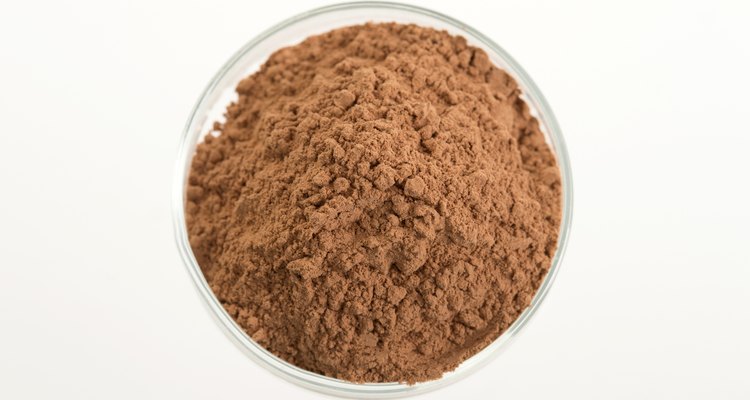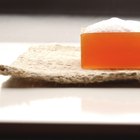
JPC-PROD/iStock/Getty Images
Bentonite is a rock, called a smectite, composed of clay minerals formed from volcanic ash. When purified water is blended with bentonite, you get bentonite magma. Bentonite magma is used in cosmetic and health care formulations because of its stabilization of suspensions and emulsions properties, as a transport system for controlled release of drugs, as a thickening agent and for its absorbent qualities.
Stabilizing Properties
Bentonite magma is used to influence the stability of other pharmaceutical and cosmetic products. Bentonite stabilizes oil in water, and prevents separation even at high temperatures. This ensures uniform dosage in the case of pharmaceutical combinations such as calamine lotion, according to the U.S. Pharmacopoeia.
It is also used, along with xanthan gum, as a suspending agent in antacids to get the correct viscosity, according to Science Direct. Suspending agents prevent sedimentation without affecting the uniformity of the product.
Transport Mechanism
Certain active ingredients in preparations such as ointments, pastes and creams are derived from oils, emulsions or gels. Bentonite is added to these preparations to create a solid or semi-solid form of the product for application. Bentonite serves as an inert vehicle -- meaning chemically inactive -- for the transport of the active ingredient. Clay is used to reduce the timing of a drug's release, allowing for more control of how drug dosages are introduced into the body, according to a study published in December 2007 in the journal "Annals of Biomedical Engineering."
Thickening Agent
Bentonite magma is used as a thickening agent in paints, dyes and polishes. Bentonite, when exposed to liquid, thickens and forms a gel or paste, according to the Industrial Minerals Association of North America. This same thickening ability makes it an effective lubricant in diaphragm walls, foundations, and in tunneling and drilling operations. It is also used in cement mortars and in Portland cement.
Absorbent Properties
Bentonite magma can absorb up to 12 times its original volume, according to Science Direct. It is used to remove impurities in edible oils, fats, beer, wine and mineral water. Bentonite’s absorbent qualities make it useful for wastewater treatment and other environmental applications. In cosmetics, this absorbent ability is used to make pastes in face masks, and as filler for other protective creams and lotions.
Related Articles

Ingredients of Axe Body Wash

Corn Starch Vs. Baking Powder in Cooking

The Ingredients of Neutrogena Sensitive ...

The Disadvantages of Polyester Cotton

Main Ingredients in Cologne

What Products Contain Red Phosphorus?

How to Remove Ink From Nylon

Merle Norman Ingredients

Common Food Emulsifiers

Chi Silk Infusion Ingredients

How to Make Grapefruit Seed Extract

Purpose of Perfume

Ingredients in Restylane

Cold Pressed vs. Expeller Pressed

What Is the Nutritional Value of Wheat?

Do Eggs Make Baked Goods Rise?

What Are the Functions of Sodium ...

Ingredients of Bar Soap

Why Does Lighter Fluid Remove Ink?

What Is Glycerine Used For?
References
- Science Direct: Uses of Clay Minerals in Semisolid Health Care and Therapeutic Products
- New Drug Info: Bentonite Magma
- U.S. Pharmacopeia: Calamine Topical Suspension
- World Health Organization: Environmental Health Criteria 231
- "Annals of Biomedical Engineering"; Controlled Release in Transdermal Pressure Sensitive Adhesives Using Organosilicate Nanocomposites; Sohel Shaikh, et al.; December 2007
Writer Bio
Caroline Thompson is a professional photojournalist who has been working for print and online publications since 1999. Her work has appeared in the "Sacramento Bee," "People Magazine," "Newsweek" and other publications. She holds a Bachelor of Arts in photojournalism from California State University at Hayward and a personal trainer certification from the university's Health and Fitness Institute.
Photo Credits
JPC-PROD/iStock/Getty Images